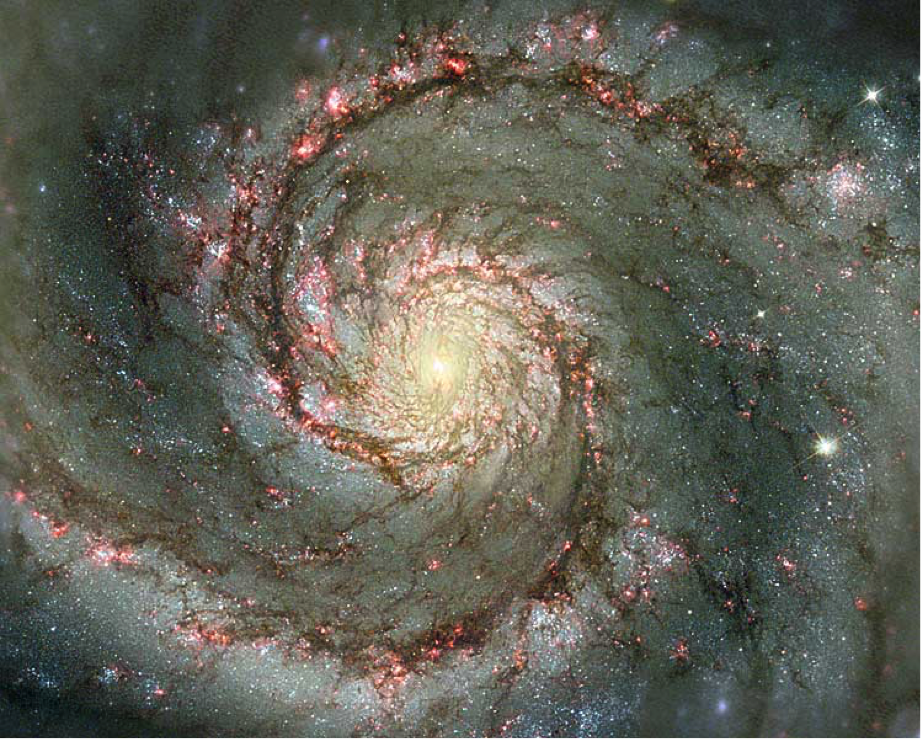The TolTEC Legacy Survey of Nearby Galaxies
The pivotal question in galaxy evolution is where and how do stars form? Answering this question requires linking physical scales that range from those of individual molecular clouds, through the “mesoscale” of galactic environments, all the way to the scale of the entire galaxy. Star formation is the main driving mechanism of galaxy evolution, by continuously converting gas into stars, and energizing and enriching the interstellar medium and intergalactic medium via stellar feedback. Key unanswered questions include: Why is the efficiency of star formation in normal galaxies so low, hovering around 1-3%, but a factor 10 greater in starburst galaxies? How do we link the gas supply at all scales to the formation of stars? What is the role of stellar feedback in this link?
TolTEC will perform surveys aimed at observing the Rayleigh-Jeans tail of the cold (T ≤ 20 K) dust emission, with sufficient sensitivity to detect individual giant molecular clouds out to 30 Mpc or more. Obtaining spatially resolved emission at the wavelengths of 1.1mm, 1.4mm, and 2.0mm will be particularly important for establishing the frequency and magnitude of excess cold dust emission and the estimate of total dust mass. The galaxies will be mapped across the entire emitting disk, with spatial resolution of 1 kpc (at 1 mm) at the median distance of 30 Mpc - enabling the exploration of the dependence of star formation and gas/dust content as a function of local environment. This type of legacy survey, tagetting the KINGFISH sample, for instance, will leverage the GALEX/UV, SDSS/optical, SPITZER/IR, ground-based HI (and, for 2/3 of the sample, Herschel–Far-infrared) images/maps, to trace the star formation, the warmer components of the dust, and the atomic gas.
 Credit: N. Scoville (Caltech), T. Rector (U. Alaska, NOAO) et al., Hubble Heritage Team, NASA
Credit: N. Scoville (Caltech), T. Rector (U. Alaska, NOAO) et al., Hubble Heritage Team, NASA